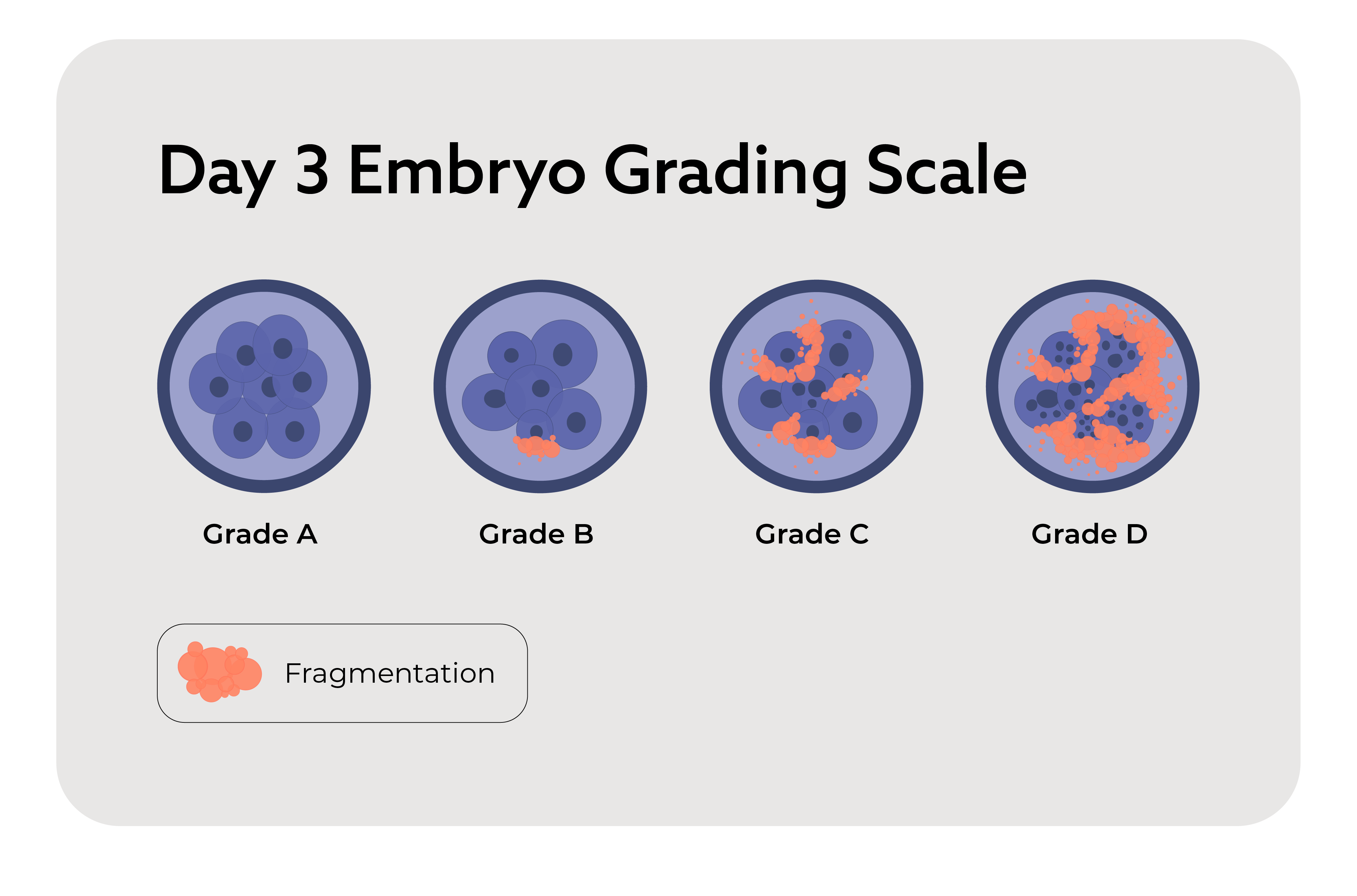Embryo grading charts help embryologists determine which embryos are most likely to result in a successful pregnancy.
There are two main embryo grading charts: one for day 3 embryos and another for day 5 embryos, or blastocysts. Each scale has specific criteria that help determine how likely an embryo is to implant and develop successfully.
Understanding the embryo grading chart meaning can help you navigate your results. Once you know whether your embryos are viable, you can make a decision on your family-building journey moving forward — whether that is to attempt a transfer or pursue surrogacy.
You can learn more about what affects embryo transfer success rates. If you are considering surrogacy for your embryos, you can also contact us online to learn more about the process.
Day 3 IVF Embryo Grading Chart [The Cleavage Stage]
On day 3, the embryo is at the cleavage stage. During this stage, the fertilized egg, or zygote, starts to divide into smaller cells called blastomeres. The embryo doesn't grow in size; it just divides into more cells.
Typically, most embryo transfers occur on day 5 because the embryo is more robust and ready for implantation. However, hopeful parents who were only able to create a few embryos or may only have low-quality embryos may consider a day 3 transfer. Since these embryos are more fragile, the uterus could provide a more natural environment to encourage further growth into a blastocyst.
Depending on the facility, embryos at this stage are evaluated on a scale from 1 to 4 or A to D. Here’s what embryologists consider:
- Number of cells: A healthy day 3 embryo usually has six to 10 cells.
- Cell uniformity: Embryos with evenly sized cells are preferred.
- Fragmentation: Less fragmentation indicates a higher-quality embryo.

Here’s a breakdown of what each grade might represent:
Excellent quality, with even cell sizes and minimal fragmentation Good quality, with slight variations in cell size and low fragmentation Average quality, with noticeable cell size differences and moderate fragmentation Poor quality, with uniform or uneven cell sizes and significant fragmentation
Day 5 Embryo Grading Chart for IVF
By day 5, the embryo should have developed into a blastocyst. A blastocyst has a fluid-filled cavity, an inner cell mass (which becomes the fetus) and a trophectoderm (which forms the placenta).
Grading for day 5 embryos is more complex and involves three factors:
- Blastocyst expansion level (graded from 1 to 6, with 6 being the most expanded)
- Inner cell mass quality (graded from A to C, with A being the highest quality)
- Trophectoderm quality (graded from A to C, with A being the highest quality)

Here’s what each number or letter on the embryo grading chart means:
Blastocyst Expansion Level
Early blastocyst, less than half the embryo’s volume Blastocyst, more than half the embryo’s volume Full blastocyst, completely filling the embryo Expanded blastocyst, starting to thin the zona pellucida Hatching blastocyst, starting to hatch out of the shell Hatched blastocyst, completely emerged from the shell
Inner Cell Mass Quality
Many cells, tightly packed Several cells, loosely grouped Very few cells
Trophectoderm Quality
Many cells forming a cohesive layer Few cells forming a loose layer Very few large cells
What Grade Is Good for Embryo Transfer?
The best embryo grades are Grade 1 or A at the cleavage stage or 5AA at the blastocyst stage. Higher grades typically indicate that the embryo has a higher chance of implantation, but the grading process doesn't guarantee success. Other factors aside from development can influence success rates, including the uterine environment and the intricacies of the transfer process.

Embryo Quality: Are Embryo Grading Charts Reliable?
Embryo grading charts provide valuable information about the likelihood of implantation success. Research indicates that “excellent” embryos have a 65% clinical pregnancy rate, whereas "poor" embryos have about a 33.3% rate. However, it's crucial to remember that even low-graded embryos can develop into healthy babies.
The grading system is a useful tool that can guide decisions, but it does not guarantee outcomes. If your embryos don't have perfect grades, don't lose hope. Many factors contribute to the success of a pregnancy.
Having a lower-graded embryo doesn't mean you can't achieve your dream of parenthood. Many couples with abnormal or lower-graded embryos have experienced success. Read their stories today.